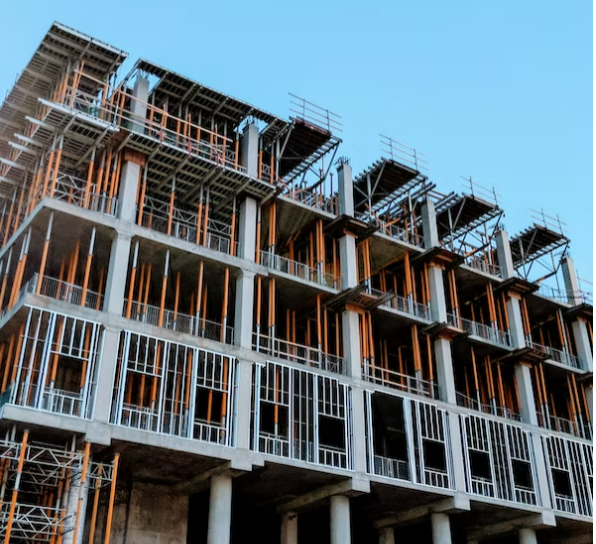Expanded Polystyrene (EPS) has earned a reputation for its role in smaller combustible cladding fires over the past 20 years due to its highly flammable composition. EPS has been resultingly identified as another construction material that needs remedial and replacement works.
The Building Safety Act 2022 (BSA) has significantly extended limitation for certain construction claims, such as for cladding products like EPS, back by 30 years and ahead by 15 years. The BSA has created a new duty of care under the Defective Premises Act 1972 (DPA) and extended the limitation periods set out in the Limitation Act 1980. For construction materials, the BSA has extended limitation prospectively by 15 years.
Under the BSA, EPS is a cladding product that has put the construction and property management industry at severe risk. EPS has similar properties to aluminum composite panel cladding, and therefore has the potential to cause tragedy due to its highly flammable and combustible nature. EPS was responsible for a Shepherds Courts fire in West London in 2016. In early November 2022 following the spread of fire in a tower block the month before, Bristol City Council have committed to replace EPS on over half of the city’s council owned tower blocks.
Whilst the UK Government has not yet required building owners or developers to remove EPS as part of its post-Grenfell building safety crackdown, it is clear that the presence of combustible EPS on buildings is a fire safety risk, which means that EPS could soon be added to the list of combustible cladding products that need to be removed in the imminent future. EPS will therefore be subject to the new limitation periods in the BSA, and it is probable that there will be more EPS claims under the BSA in the future.
Under the Limitation Act 1980, where the cause of action for any claim arose more than 6 years ago (or 12 years if the relevant contract was properly executed as a deed) that claim will fail, as the defending party will have a complete defence that the limitation period has expired. From 28 June 2022, the BSA has altered the standard position of limitation for certain claims and significantly widened the scope, changing the landscape for prospective claimants seeking a remedy for their defective buildings.
Causes of action for construction works or materials
Defective Premises Act 1972 (DPA)
The BSA creates a new section under the DPA where any person (in the course of a business) who takes on work to a dwelling now owes a duty to see that the work is done “in a workmanlike or professional manner, with proper materials and so that as regards the work the dwelling is fit for habitation when the work is completed”.
The duty is extended to homeowners and residents instructing the works, so any person with an interest in the property can bring statutory claims where any construction work renders a dwelling not fit for habitation. This is an expansion to the DPA as it now includes a duty for works not just in the original construction of new-builds or conversions, but also for any renovation, refurbishment and rectification works – including remedying defective work.
Fitness for habitation has been in front of the courts before, most notably in Bole v Huntsbuild Ltd and another [2009] EWHC 483 (TCC), where a dwelling house would be deemed unfit for habitation if it was defective in any matter listed in s604(1) of the Housing Act 1985 or had any defects of quality rendering the dwelling unsuitable for its purpose or there were any dangerous defects.
Construction (and cladding) materials
The BSA provides that claims for compensation where a loss has been suffered may now be brought by any person who has an interest in a dwelling against product manufacturers and suppliers, where their materials and products have been the cause of personal injury, damage to property and/or economic loss and caused the dwelling to be unfit for habitation (as above).
The BSA creates a right of action against any party that is responsible for a failure in relation to a construction or cladding product. In light of EPS, the BSA has widened the scope of potential liabilities and means that any person with an interest in the property can bring about a claim. The BSA gives greater statutory rights to potential claimants and gives Martlet Homes Ltd v Mulalley & Co Ltd [2022] EWHC 1813 (TCC) statutory footing.
The case of Mulalley concerned the defective design and installation of EPS cladding. The judge awarded Martlet substantial damages for the remedial works it undertook to address the defects in the cladding system. The judge also awarded Martlet damages for the substantial costs of the waking watch service implemented by Martlet, as a temporary mitigation measure for the risks posed by the cladding pending removal.
Building Act 1984 (BA)
Section 38 of the BA is not currently in force, however the government has stated it intends to bring it into force alongside the other changes to limitation. S38 of the BA imposes liability for any damage caused by a party’s failure to comply with the requirements of building regulations and provides a statutory right for the party suffering the damage to claim compensation.
Building Liability Orders (BLOs)
The High Court may issue BLOs stating an original corporate body is liable for the actions of its associated corporate entities. This will allow for claims to be brought against parent companies where the original developing entity no longer exists. Secondary legislation will be forthcoming to set out further details.
Effect on limitation periods
As set out above, the starting point for limitation periods for claims is when the cause for action arose. For defective works claims, depending on the action, this could be for example when the defective workmanship was carried out or when the defective material was specified. There are other potential causes of action which may change the “starting point” for a limitation period and each case will need to be carefully considered.
The BSA makes the following general changes to limitation (with a one year initial buffering period to allow for claims close to limitation in 2022 to be considered and potentially brought):
For claims being brought under the DPA
- Where works are completed before 28 June 2022, claimants now have 30 years from when the cause of action arose to bring a claim.
- Where works are completed after 28 June 2022, claimants have 15 years from when the cause of action arose / arises to bring a claim.
For claims being brought under s38 of the BA
- Only applicable to works completed after 28 June 2022, claimants have 15 years from the date of completed building works to bring a claim (once s38 of the BA is in force as currently it is not so the right to claim has not yet been provided under statute).
For claims bring brought in relation to construction (and cladding) products / materials
- Claimants have 15 years from the date the right of action arises / arose (date the construction or works are completed) to bring a claim in respect of construction materials. This duty of care in relation to construction products only comes into force after 28 June 2022, so any claims for products where the right of action arose prior to 28 June 2022 will fail as there was no duty to breach.
- Where defective cladding products have been used and the right of action has accrued before 28 June 2022, claimants have 30 years to bring a claim.
- Where defective cladding products have been used and the right of action has accrued after 28 June 2022, claimants have 15 years to bring a claim.
Practical considerations going forward
Potential retrospective claims (buildings completed before 28 June 2022)
Any person or entity with an interest in a dwelling that may be “unfit for habitation” will have 30 years from the date the cause of action arises to bring its claim. The potential claimant does not need to have a contractual relationship with the defendant to bring this claim under the DPA though they would need to demonstrate that the dwelling is unfit for habitation.
Where the defect is due to a cladding product such as EPS, the claim may be brought under the BSA against the product manufacturer or supplier. This may be an avenue for recovery that liable developers / building owners, who are facing claims from leaseholders / tenants, may wish to consider and explore further.
If the responsible contractor is no longer trading but there is a parent company, BLOs may need to be sought.
Any person or entity with an interest in a dwelling that previously was ‘time-barred’ from claiming under the DPA may now wish to revisit its claim. On the other hand, any developer or building owner may need to revisit its portfolio to identify any buildings “at risk” of a claim being brought, this will now extend to any buildings with any construction works carried out between 28 June 1992 and 28 June 2022.
Any and all documentation that could be relevant needs to be identified, retrieved and retained.
Where a claim has been subject to final determination by way of arbitration or litigation, it is highly unlikely that the claim can be revisited. However, where claims have been settled by way of a settlement agreement, the settlement agreement will need to be carefully considered and reviewed. The BSA does not reopen previously settled claims, however a settlement agreement does not necessarily conclude every possible claim.
Future contracts
The BSA provides a prospective 15 year limitation period for certain claims that may be brought following construction works. Parties to any construction contract will need to ensure their rights are properly protected and provides suitable time periods for:
- Warranties
- Insurances
- Consultant appointment insurances and liabilities
- Limitation of liability clauses
- Subcontractors
- Product manufacturers / suppliers
- Product guarantees and warranties
- Defects liability
- Document retention
Looking ahead
This is new ground for the construction and real estate industry and will be a tumultuous time for all parties involved in the cladding crisis and beyond, as the BSA opens up previously time barred claims and creates duties on businesses to build, convert and construct properly.
The BSA has created an unlimiting to limitation periods (retrospectively of 30 years) and there will undoubtedly be a rise in claims under the DPA as home and building owners seek to make their properties “fit for habitation”, especially as the danger of materials like EPS become more apparent.
If you think you have a potential retrospective or prospective claim due to the presence of non-compliant construction or cladding products on your building, please get in touch with a member of our construction team to discuss your requirements further and we would be pleased to assist you.
If you are considering your construction documents for a project that has not yet reached practical completion, or if your contract has not yet been finalised, please get in touch with a member of our construction team to discuss how we can help you to ensure your interests are properly protected.




